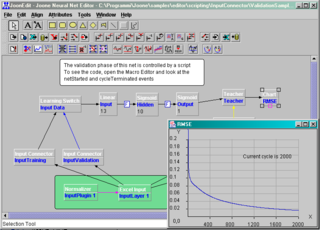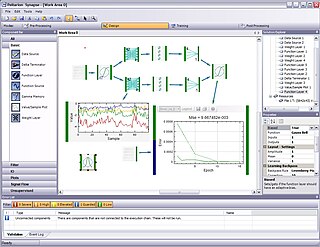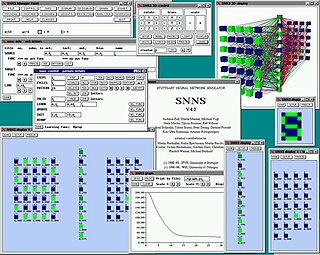 W
WEmergent is neural simulation software that is primarily intended for creating models of the brain and cognitive processes. Development initially began in 1995 at Carnegie Mellon University, and as of 2014, continues at the University of Colorado at Boulder. The 3.x release of the software, which was known as PDP++, is featured in the textbook Computational Explorations in Cognitive Neuroscience.
 W
WEncog is a machine learning framework available for Java and .Net. Encog supports different learning algorithms such as Bayesian Networks, Hidden Markov Models and Support Vector Machines. However, its main strength lies in its neural network algorithms. Encog contains classes to create a wide variety of networks, as well as support classes to normalize and process data for these neural networks. Encog trains using many different techniques. Multithreading is used to allow optimal training performance on multicore machines.
 W
WGenerative Pre-trained Transformer 2 (GPT-2) is an open-source artificial intelligence created by OpenAI in February 2019. A transformer machine learning model, GPT-2 uses deep learning to translate text, answer questions, summarize passages, and generate human-readable text output on a level that is often indistinguishable from that of humans. It is a general-purpose learner; it was not specifically trained to do any of these tasks, and its ability to perform them is an extension of its general ability to accurately synthesize the next item in an arbitrary sequence.
 W
WJOONE is a component based neural network framework built in Java.
 W
WNeuroSolutions is a neural network development environment developed by NeuroDimension. It combines a modular, icon-based (component-based) network design interface with an implementation of advanced learning procedures, such as conjugate gradients, Levenberg-Marquardt and backpropagation through time. The software is used to design, train and deploy neural network models to perform a wide variety of tasks such as data mining, classification, function approximation, multivariate regression and time-series prediction.
 W
WOCRopus is a free document analysis and optical character recognition (OCR) system released under the Apache License v2.0 with a very modular design using command-line interfaces.
 W
WSynapse is a component-based development environment for neural networks and adaptive systems. Created by Peltarion, Synapse allows data mining, statistical analysis, visualization, preprocessing, design and training of neural networks and adaptive systems and the deployment of them. It utilizes a plug-in based architecture making it a general platform for signal processing. The first version of the product was released in May 2006.
 W
WPrisma is a photo-editing mobile application that uses neural networks and artificial intelligence to apply artistic effects to transform images.
 W
WSNNS is a neural network simulator originally developed at the University of Stuttgart. While it was originally built for X11 under Unix, there are Windows ports. Its successor JavaNNS never reached the same popularity.
 W
WThe Wolfram Language is a general multi-paradigm computational language developed by Wolfram Research. It emphasizes symbolic computation, functional programming, and rule-based programming and can employ arbitrary structures and data. It is the programming language of the mathematical symbolic computation program Mathematica.